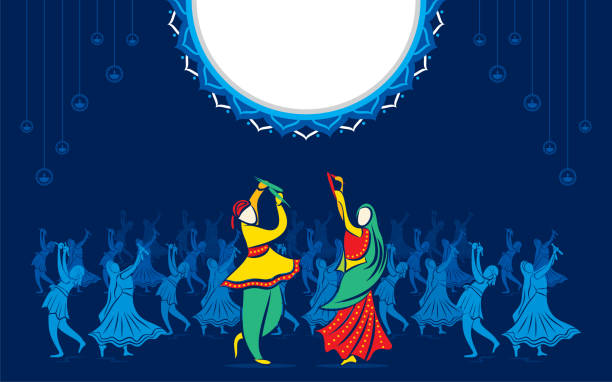India, often described as a land of diversity, is equally celebrated for its rich tapestry of festivals. With a plethora of cultures, languages, and traditions woven into its fabric, India is home to an astounding array of festivals that are celebrated with unmatched fervor. Among these, Navratri stands out as a radiant jewel in the crown of Indian festivities. As Navratri 2023 approaches, it is the perfect time to explore the vibrant tapestry of Indian festivals and delve into the significance of this nine-night extravaganza.
The Kaleidoscope of Indian Festivals
India is a country that never rests when it comes to celebrating festivals. It is a land where every day is a celebration of some sort, and every festival is an opportunity for people to come together, rejoice, and pay homage to their heritage. The reasons for celebration are as diverse as the country itself, ranging from religious events to harvest festivals, and from historical commemorations to seasonal changes.
Indian festivals are a testament to the country’s spiritual depth and cultural diversity. Each region, state, and community adds its own unique flavor to the festivals, making them a reflection of the local culture and traditions. While it is impossible to capture the essence of every Indian festival in a single article, let’s take a glimpse into some of the most prominent and celebrated festivals:
- Diwali: Often referred to as the “Festival of Lights,” Diwali is one of India’s most widely celebrated festivals. It signifies the triumph of light over darkness and good over evil. Homes are adorned with oil lamps and colorful decorations, and fireworks light up the night sky.
- Holi: Known as the “Festival of Colors,” Holi is celebrated with great enthusiasm and marks the arrival of spring. People play with colored powders and water, symbolizing the victory of good over evil and the blossoming of love and friendship.
- Eid-ul-Fitr and Eid-ul-Adha: These two Islamic festivals are celebrated by the Muslim community with great fervor. Eid-ul-Fitr marks the end of Ramadan, the holy month of fasting, while Eid-ul-Adha commemorates the willingness of Ibrahim (Abraham) to sacrifice his son as an act of obedience to God.
- Durga Puja: Celebrated predominantly in the eastern state of West Bengal, Durga Puja is dedicated to the goddess Durga. Elaborate idols of the goddess are crafted and then immersed in water, symbolizing her return to her divine abode.
- Ganesh Chaturthi: This festival celebrates the birth of Lord Ganesha, the elephant-headed god of wisdom and prosperity. Large idols of Lord Ganesha are worshipped and then immersed in water.
- Raksha Bandhan: A celebration of the bond between brothers and sisters, Raksha Bandhan involves the tying of a protective thread (rakhi) by sisters on the wrists of their brothers, who, in return, promise to protect and care for their sisters.
- Pongal and Makar Sankranti: These harvest festivals are celebrated with much gusto in the southern and northern regions of India, respectively. They mark the transition of the sun into the zodiac sign of Capricorn (Makar), signifying the onset of longer days.
- Onam: The vibrant festival of Onam is celebrated in the southern state of Kerala. It is a harvest festival that commemorates the return of the mythical king Mahabali, known for his generosity and rule of equality.
- Navratri: Finally, the spotlight of this article is on Navratri. It is a Hindu festival celebrated across the country, albeit with some regional variations. Navratri is a festival that pays homage to the divine feminine and is celebrated with dance, music, fasting, and devotion.
The Vibrancy of Navratri
Navratri, the festival of nine nights, is a dazzling celebration of the goddess Durga, who represents feminine power and divinity. In 2023, Navratri will be celebrated with immense fervor and zest, much like every year. It is a festival that transcends regional boundaries, uniting people in a common celebration of spirituality, culture, and tradition.
The Significance of Navratri
The word “Navratri” translates to “nine nights” in Sanskrit, signifying the duration of the festival. These nine nights are dedicated to the worship of the nine different forms of Goddess Durga, each with its unique attributes and symbolism. The festival is celebrated in the honor of the goddess’s victory over the demon Mahishasura, symbolizing the triumph of good over evil.
The nine forms of Goddess Durga worshiped during Navratri are:
- Shailaputri: The daughter of the mountains, representing strength.
- Brahmacharini: The goddess of penance and devotion.
- Chandraghanta: A symbol of bravery and courage.
- Kushmanda: The creator of the universe.
- Skandamata: The nurturing and protective mother.
- Katyayani: A symbol of determination and the ability to conquer challenges.
- Kalratri: The fierce destroyer of ignorance and darkness.
- Mahagauri: The pure and radiant form of the goddess.
- Siddhidatri: The bestower of supernatural powers and fulfiller of desires.
During Navratri, each day is dedicated to one of these forms of the goddess, and devotees offer prayers, perform aarti, and engage in various cultural events to honor that specific aspect. The festival is marked by vibrant decorations, traditional dances, music, and the recitation of religious texts.
Navratri Celebrations in 2023
Navratri 2023 celebrations are expected to be grander than ever, as people come together to seek solace and joy in the midst of global uncertainties. The festival is not only a religious event but also a cultural extravaganza.
Garba and Dandiya Raas, the traditional folk dances, take center stage during Navratri. Dressed in colorful attire, people gather to dance and make merry. The atmosphere is electric with music and rhythm, and the dances are a way to celebrate life and connect with fellow revelers.
Fasting and feasting are integral to Navratri celebrations. Many devotees observe fasts during these nine days, consuming only specific foods. The fasting is seen as a means of cleansing the body and mind while paying homage to the goddess. The fast is broken each day with a sumptuous meal that includes a variety of dishes and sweets.
Navratri is not just a religious or cultural festival; it also provides a platform for artists to showcase their talents. Music, dance, and arts and crafts exhibitions are organized, allowing people to explore and purchase traditional handicrafts and clothing.
The Global Impact of Navratri
Navratri is not confined to the borders of India. The Indian diaspora has taken this festival across the globe. In countries with a significant Indian population, such as the United States, the United Kingdom, Canada, and many others, Navratri is celebrated with the same enthusiasm and zeal as it is in India. The Indian communities abroad organize cultural





